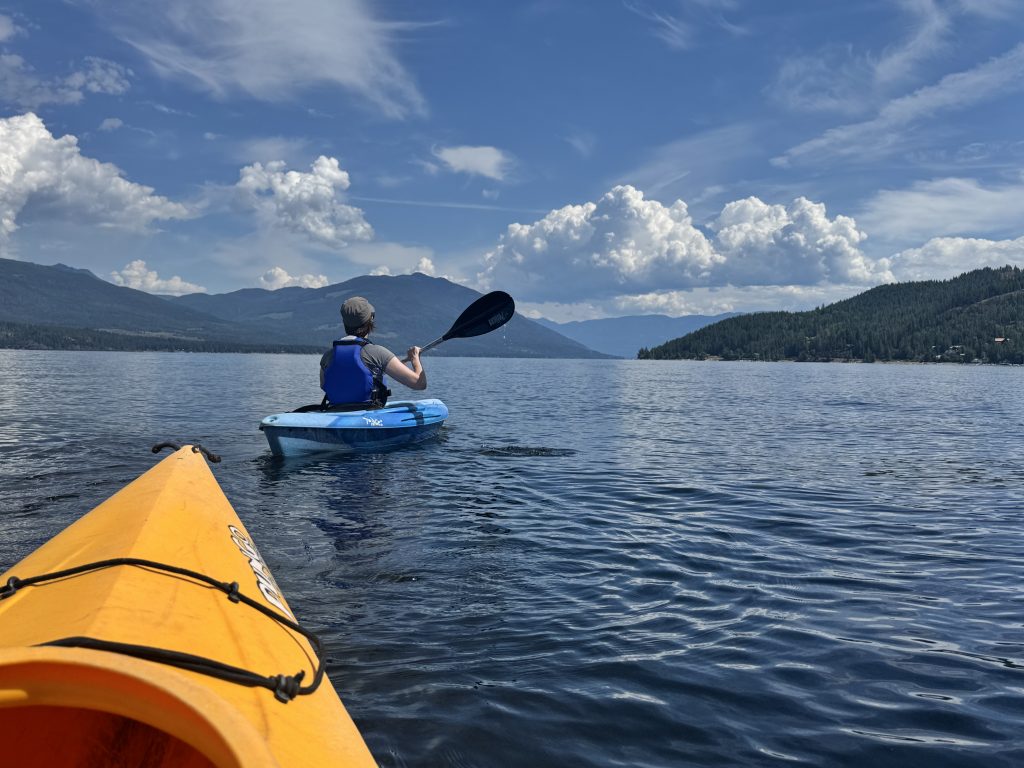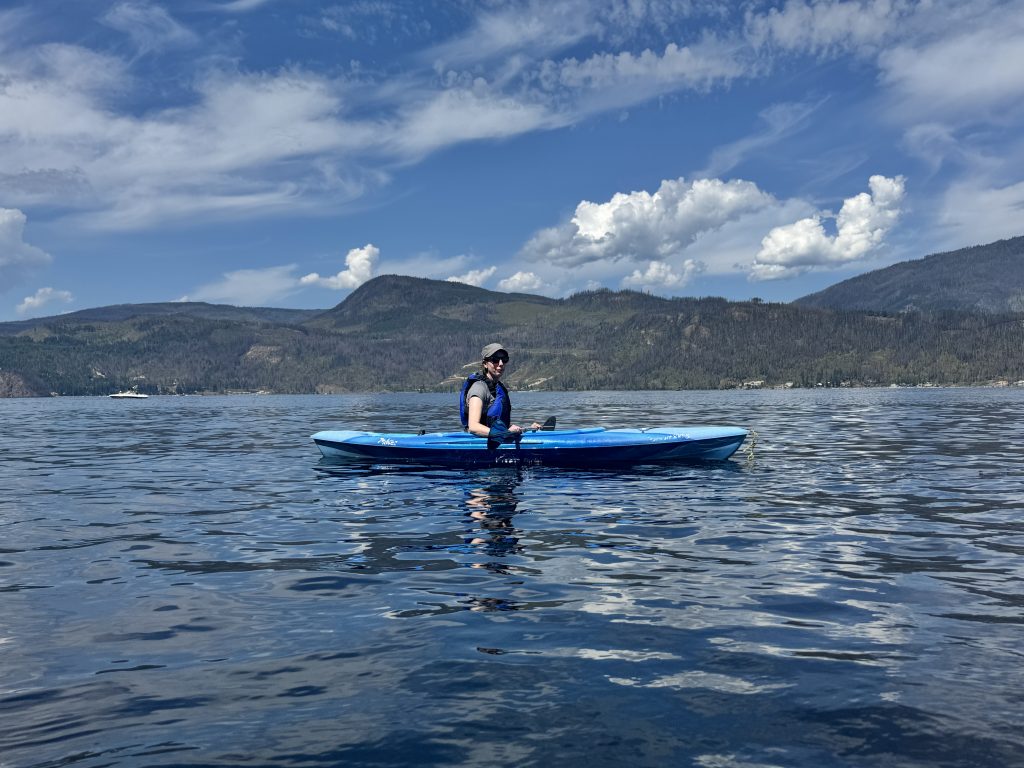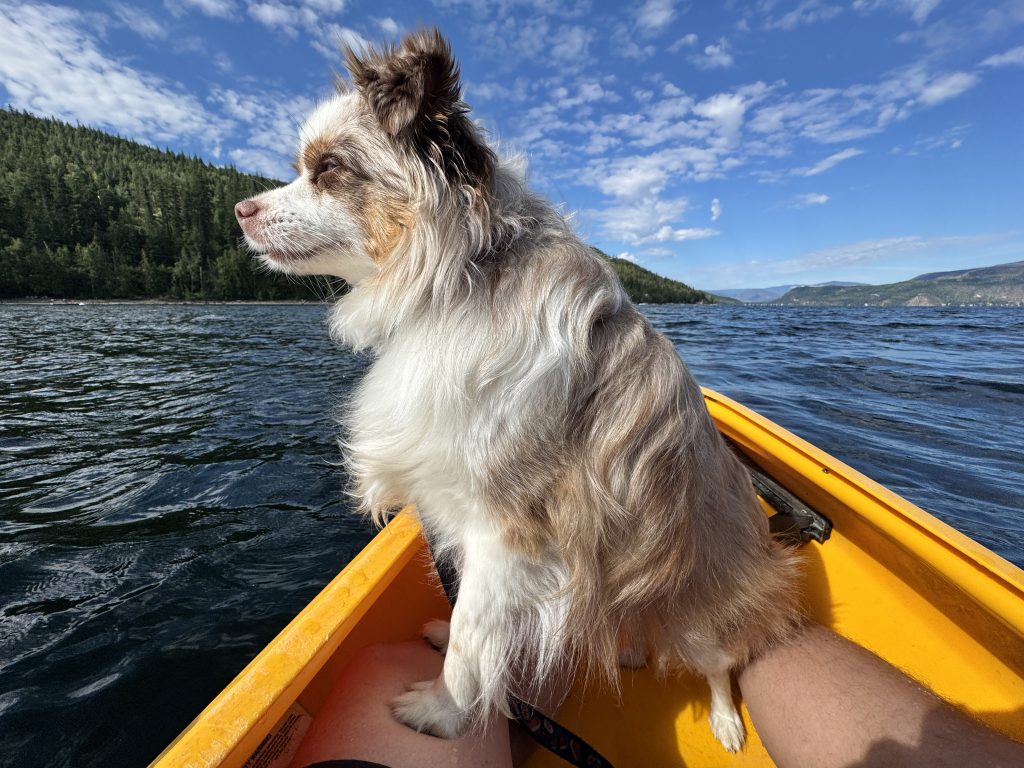The lakes of the Shuswap region of central British Columbia are deep and clear, mountain reservoirs nestled between the diminishing elevations of the rocky mountains that ripple through the middle of the province. According to Wikipedia the wandering many-armed lake has an average depth of over sixty meters, a deepest point over one hundred and fifty meters, and covers a surface area of over three hundred square kilometres.
Our adventures in kayaks were barely a fraction of a fraction of that scope, but even so it gave me a taste of the place and the vibe with a kind of intimacy that is only found by moving through a space under one’s own muscle power.
A lot of people live in the region marked by the shores of the Shuswap Lake, dozens if not hundreds of small communities line the banks. A few of those people are the relatives on my wife’s side of the family who, after living in Northern Alberta for most of their lives bought a permanent home a few steps from where they used to vacation each summer and moved. The family that we used to travel up to visit in a remote northern agricultural community now live an enviable life in the microclimate wine region of the country, boating and sunning and living their best days. And, as it was, hosting an anniversary party on the Saturday evening of last weekend.



We made the ten hour drive over the continental divide mountain passes and along busy summer highways through the national parks, and checked into a posh vacation rental down a remote road along the shore of one arm of the lake. The luxury house sat in the woods and opened with a view out over the water a few dozen meters below and the rolling mountain ranges a dozen kilometres to the north. And like some lucky fortune ready-made-for-an-airbnb-advert the beautiful home for which we had five days of exclusive possession also had privileges to a private dock on the lake and a trio of kayaks waiting on the shore.
Of course in a span of five days the weather was not always on our side, but at least four times both time and climate were on our side, and we trod down to the edge of the water with our life vests in hand and clambered into our various watercraft. My wife is a fan of the stand up paddle-board. We bought ourselves one with our airline reward points during the pandemic when we were not traveling far and needed summer activities. I am more of a kayak guy myself, and did we not live in a landlocked city with naught much recreational water but a flowing river and a smattering of shallow swampy lakes I would likely have a kayak of my own strapped to my truck for the duration of the summer.
The Shuswap Lake is huge when one enters it in the protection of nothing but a yellow, plastic bath toy. I was not afraid of the boat ever really capsizing in the calm summer waters, but the lake is home to countless recreational motor boats ferrying sports fishers, or pulling water skiers, or cruising the coves. The area is also well known for a houseboating culture where two-story bricks like bloated RVs on floats toddle around the lake blasting party music and hosting happy families swimming from the sides or lounging on their decks. I was never worried about nature, but I was somewhat worried about getting trounced by a speeding motorboat that didn’t see my florescent yellow glow in the glare of the sunshine bouncing off the water.



Yet I paddled around and around and out and back and around some more. I was out on the water for hours, baking my skin in the unshaded heat as I toured our little stretch of private coastline. All the while I tracked the progress with my Garmin and despite my untiring efforts paddling through the deep blue waters of the lake when I went back to the house and loaded my GPS map onto the screen the little squiggled line of my travels was barely a toe in the vast waters. It had felt like I had gone half way across the lake at one point but in reality it was no more than five percent of the distance that I’d covered with all my efforts.
Given more time and a better plan, a lack of obligation to attend to family events or the other duties of adulthood I may have set off with a tent and supplies and spent the whole summer paddling the circumference of the lake. I would wager there is at least a few hundred kilometres of coastline to explore. And as we were driving home, spending over an hour at speed driving along the arm of the lake that led us back towards the mountain passes, I pondered if anyone has ever thought of or facilitated such a thing. Certainly I am not the first to wonder about a month-long trek along the long lake shore, stopping to camp and enjoy, wandering into any of those communities to buy local fruit and wine, avoiding the houseboats and water-skiers, and paddling through the cool, deep mountain waters without a care.

























You must be logged in to post a comment.